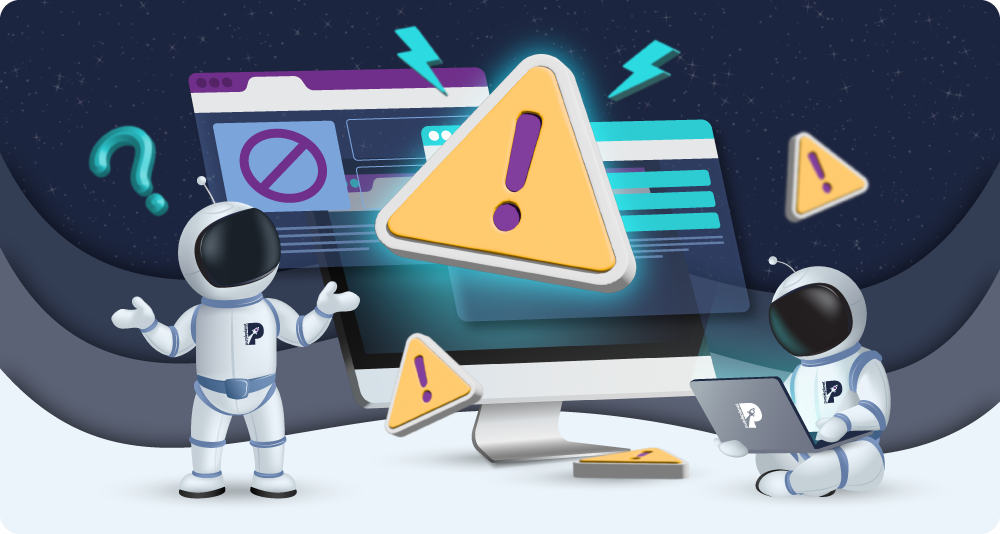

Top 10 Web Design Mistakes That Kill User Engagement
10 web design mistakes that will kill user engagement
Your business’s website is your online storefront. It’s where customers meet your company for the first time, browse your products, and learn about your brand. Given this, it’s essential that your web design is usable, enjoyable, and helps would-be customers to complete their desired journeys.
Unfortunately, so many websites are difficult to use, hard to navigate, and annoying to browse through. There are several things that website owners typically overlook that can result in low user engagement, and we’ll explore them in this article.
If you find you’re guilty of any of the following issues, make sure you speak with an experienced web designer to rectify them.
So, let’s dive into the top 10 web design mistakes that will kill user engagement:
1. Slow site loading times
Before visitors get to experience your website, they may encounter the problem of slow loading time. As such, this issue should be dealt with first, securing the highest number of visitors.
The importance of site loading speed cannot be underestimated:
- 25% of website visitors will abandon a site if it takes more than four seconds to load.
- Webpages on Google’s first page have an average loading time of 1.65 seconds.
Web designers can improve loading times by optimising images and other media, minifying CSS and JavaScript files, utilising caching techniques, and choosing a reliable and fast hosting provider.
2. Unclear navigation
When website visitors can’t find what they’re looking for, it increases their frustration and, therefore, the likelihood they’ll bounce off of your site. This can occur when navigation menus are unclear or complex or even if navigation is hidden.
Websites can suffer from this problem even when the design appears to be highly modern and stylish because they’ve been overly minimalised. So, don’t make the mistake of thinking only older websites can have poor navigation.
Although minimalism in web design can look very appealing, users still need clear signposts for completing their desired journeys.
Clear and intuitive navigation can be achieved by organising the menu logically, using descriptive labels, providing a search function, and implementing breadcrumbs or contextual navigation to help users understand their location within the site.
3. Lack of mobile friendliness
Mobile optimisation is extremely important. Of all the top-ranked sites on Google, 80% are optimised for mobile, which strongly indicates Google’s preference on the matter.
But it’s not all about SEO. 61% of users will never return to a website that’s not mobile adaptive, resulting in low engagement rates for sites that haven’t considered mobile users.
You can help mobile optimisation by ensuring your website can adapt seamlessly to different screen sizes and devices and using flexible layouts, optimised images, and employing CSS media queries.
4. Cluttered design
Overwhelming users with too much information, excessive ads, or distracting elements can hinder user engagement as it makes it difficult to focus on one single thing.
The main culprit for this is a lack of visual hierarchy. This is how information is presented to site visitors, guiding them to where they should direct their attention. Created by colour, contrast, scale, and grouping, visual hierarchy needs to be well-organised so that users aren’t overwhelmed and miss key information.
Visual hierarchy can help CTAs stand out, which should be top-of-mind when designing websites. Make sure your CTAs are made clear through the use of colour, font, or size and make webpages dedicated to a single purpose rather than multiple.
5. Inaccessible content
Long paragraphs without proper formatting make it challenging for users to read the content on your site. Make sure you’re using things such as headings, subheadings, bullet points, and white space to make reading easier.
Otherwise, users won’t notice all the value you can offer and may go to a competitor’s site instead.
Accessibility is also about catering to website visitors with disabilities. Since 15% of the world’s population lives with a disability that affects their ability to use the internet, businesses need to pay attention to this demographic.
Ignoring accessibility guidelines can exclude these users from accessing and engaging with websites. So, web designers should ensure they’re considering all possible accessibility features.
Web designers can improve accessibility by adhering to web content accessibility guidelines (WCAG), ensuring proper heading structure, providing alternative text for images, implementing keyboard navigation support, and conducting regular accessibility audits.
You can learn more about website accessibility from our article here.
6. Hidden information
Failing to provide clear and easily accessible contact information can frustrate users who want to get in touch or seek support.
If users cannot find the information they are seeking or if the content is poorly organised and difficult to understand, they may become frustrated and leave.
Designers should ensure that essential information is prominently displayed, such as contact details, important announcements, or key product or service features. Using visually prominent elements, strategic placement, and concise messaging can help highlight critical information.
7. Unresolved technical issues
Websites that experience frequent downtime, errors, or other technical issues can quickly frustrate users who expect a seamless browsing experience, leading them to leave and search for more reliable alternatives.
Encountering broken links is one thing, but if they’re handled badly, users can become even more frustrated. For instance, not providing clear error messages or redirects for broken links or 404 pages can lead to user frustration and abandonment.
Regular testing and maintenance are crucial to identify and fix technical issues promptly. Web designers should monitor server performance, update plugins and software, conduct cross-browser testing, and implement error handling to minimise technical problems.
8. Lengthy sign-up or checkout processes
When users just want to complete a quick purchase or sign up for a newsletter, the last thing they want is to spend an extra 10+ minutes filling in forms. After high costs, the most common reason for cart abandonment is websites asking users to make an account.
Website owners need to be mindful of this because lengthy sign-up or checkout processes can be the difference between a positive and negative user engagement rate.
With 17% of abandoned carts due to long and complicated checkout processes, businesses can easily reduce this figure by simplifying user journeys through web design.
Simplifying sign-up and checkout processes can be achieved by minimising the number of form fields, offering social login options, implementing progress indicators, and providing clear instructions at each step to enhance the user’s sense of progress and efficiency.
9. Too many distractions
A common barrier to a positive user experience is a distracting webpage. If users find your website to be overly hectic and jarring, they’re likely to bounce off and visit a competitor’s site. Distractions prevent visitors from accessing the information they need and can even annoy them.
When designing your site, you should reduce the number of pop-ups you have and also reconsider any auto-playing media. Auto-playing videos, audio, or ads can annoy users and disrupt their browsing experience. Providing control to the user over media playback is crucial.
Pop-ups and auto-playing media are also key indicators of an untrustworthy site – an impression you definitely don’t want to be giving off.
So, make sure you limit the number of ads on your pages and minimise pop-ups. Always use whitespace to separate content and ensure CTAs are visually prominent.
10. Excessive use of Flash
Though Flash was initially integral to the development of the internet, it’s no longer the optimal choice for modern websites. It can even be detrimental to your site’s SEO.
Firefox began the transition away from Flash in 2011, after security concerns, and completely blocked it in 2021 with the release of Firefox version 85. Beyond security, there are other issues with Flash, such as slow loading times, lack of mobile usability, and the much better alternative of HTML5.
Plus, Flash provides very poor usability. Xanthos explains that “it can’t be searched, there’s no way to hit a back button within Flash content, […] and it’s impossible to navigate on a touch screen.”
Moving away from Flash and adopting modern web technologies like HTML5, CSS, and JavaScript ensures compatibility across devices. Migrating Flash-based elements to HTML5 equivalents and leveraging responsive design principles can enhance the user experience, eliminate Flash-related issues, and give your site’s SEO a boost.
Final thoughts
So, those are 10 web design mistakes to avoid. If you want to learn more about optimising your website’s design, you can check out more articles on our blog.
Or, if you’d like some outside help with your website’s design, our team at purpleplanet would love to help. Click the button below to reach out or learn more about our services.











